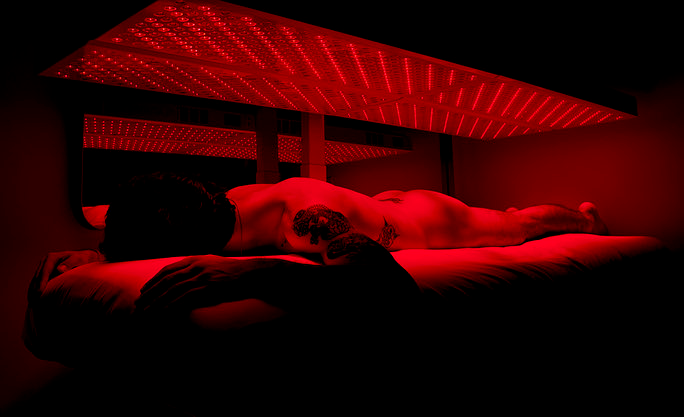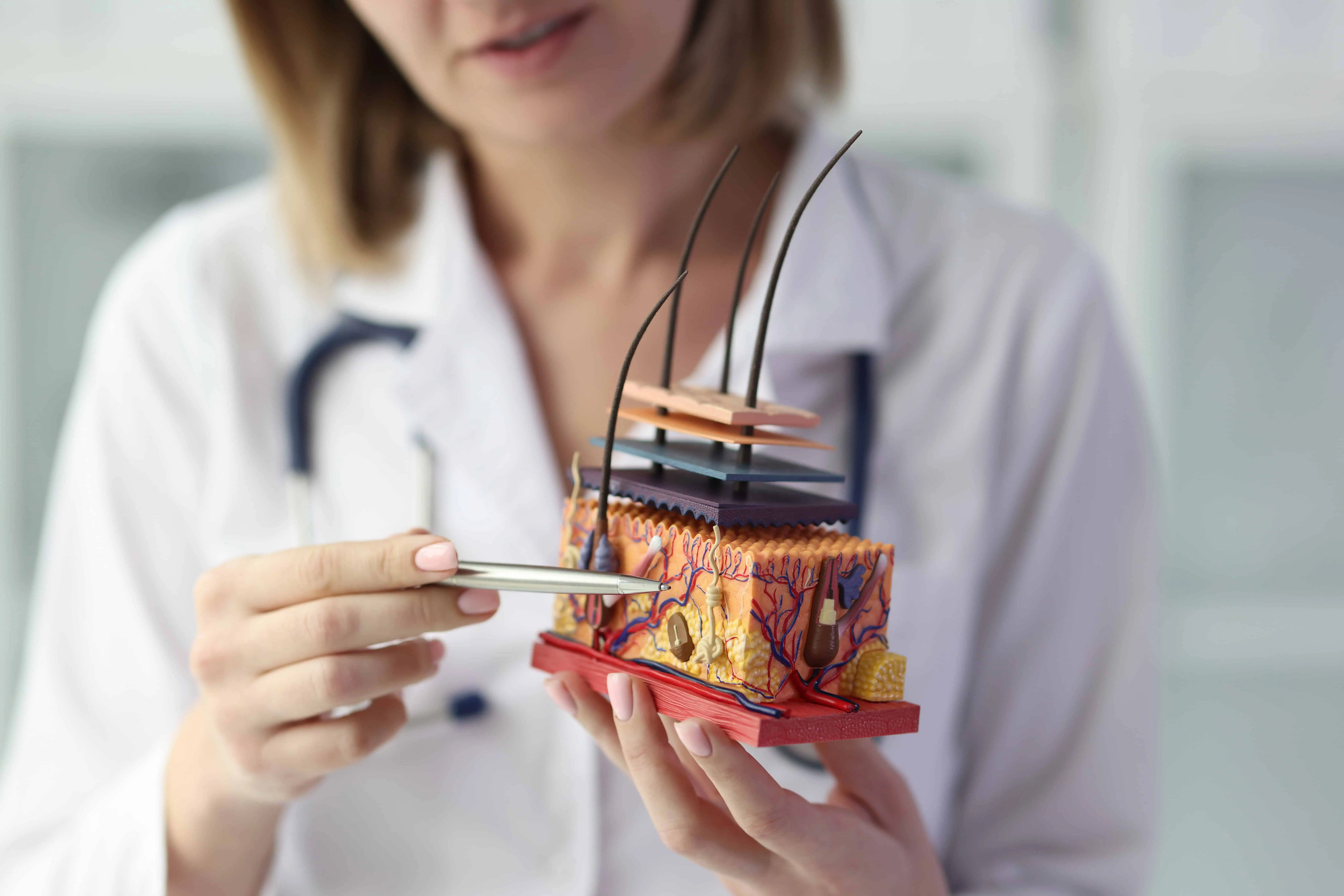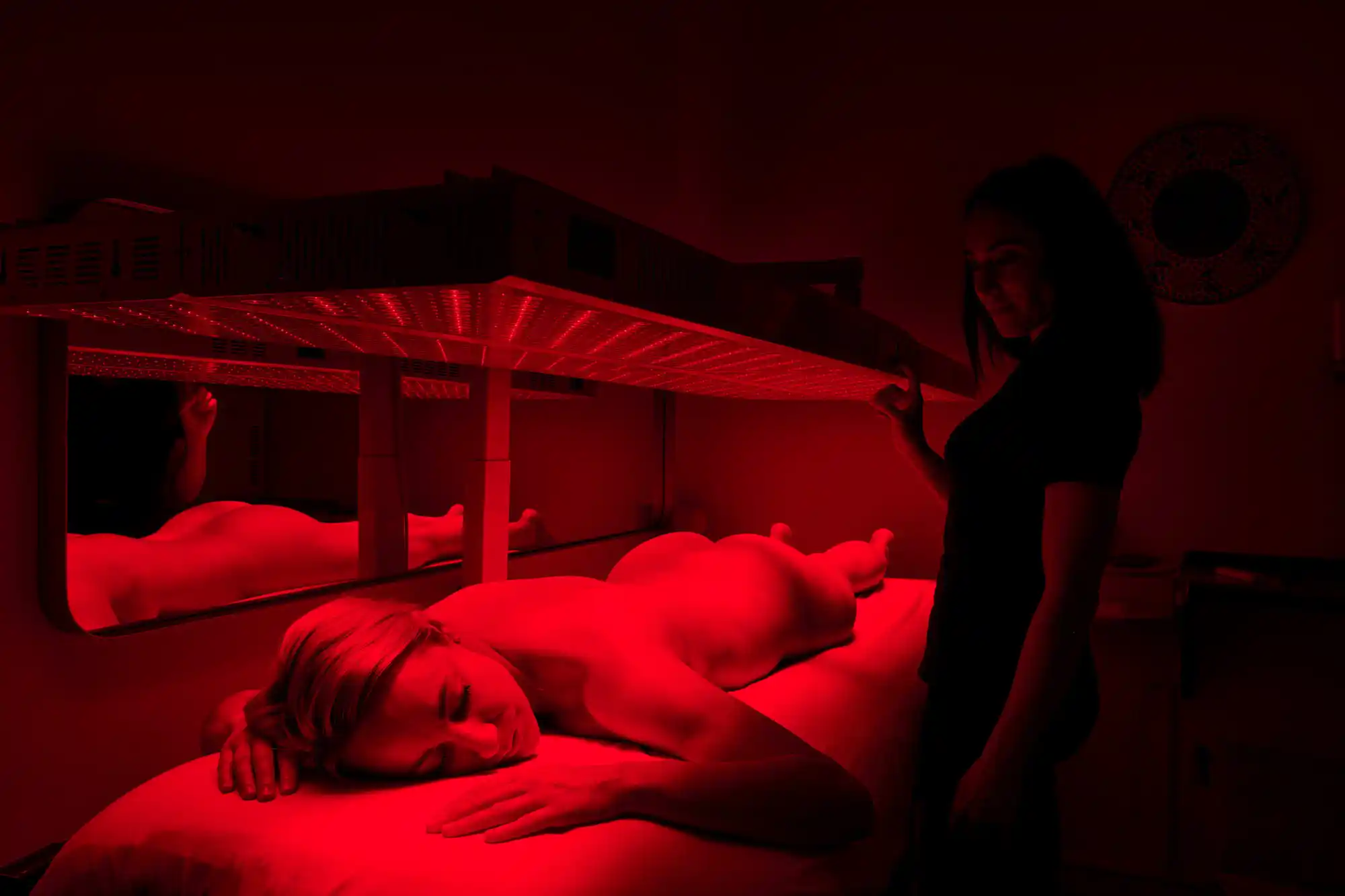Medically reviewed by Dr. Lauren Weber
Introduction
Rosacea is an inflammatory chronic skin condition characterized by redness, flushing, and sometimes the appearance of small, pus-filled bumps on the face. It can be frustrating and challenging to manage, often causing discomfort and self-consciousness for those affected. While there’s no cure for rosacea, various treatments aim to manage its symptoms and improve the skin’s overall appearance. One such emerging treatment is Red Light Therapy (RLT), which has gained attention for its potential benefits in managing rosacea symptoms. In this blog post, we delve into the effectiveness of RLT for rosacea and explore its potential as a therapeutic option for this skin condition.
Understanding Rosacea
Before delving into the potential benefits of Red Light Therapy for rosacea, it’s essential to understand the nature of this skin condition. Rosacea primarily affects the facial skin, causing redness, visible blood vessels, and sometimes pimples or bumps resembling acne. The exact cause of rosacea remains unknown, but factors such as genetics, environmental triggers, infections, and abnormalities in the immune system are believed to play a role. Common triggers include sun exposure, spicy foods, alcohol, stress, hormonal fluctuations, hot/cold temperatures, and certain skincare products. Rosacea can affect anyone, but fair-skinned individuals and women have a higher likelihood of being affected.
Rosacea symptoms can vary from mild to severe and may include:
- Persistent facial redness, particularly in the central areas of the face
- Flushing or blushing easily
- Visible blood vessels (telangiectasia)
- Swollen, red bumps or pimples (resembling acne)
- Dry, irritated, burning, or sensitive skin
- Raised patches resembling a rash (plaques)
- Thickening of the skin, particularly on the nose (rhinophyma)
While rosacea isn’t life-threatening, it can significantly impact a person’s quality of life, leading to emotional distress and affecting self-esteem. Therefore, effective management strategies are essential to alleviate symptoms and improve overall well-being.
Red Light Therapy (RLT) for Rosacea
Red Light Therapy, or low-level laser therapy or photobiomodulation, involves exposure to Red and Near-Infrared Light. This non-invasive treatment stimulates cellular function and promotes healing, making it suitable for various skin conditions, including rosacea. Red Light Therapy activates and enhances the process of making ATP; water is a byproduct. Water is beneficial as it helps with hydration, transports oxygen and nutrients and aids in detoxification. RLT also works by penetrating the skin’s surface and stimulating cellular energy production, which can help reduce inflammation, improve circulation, and promote tissue repair.
Several studies have investigated the potential benefits of RLT for rosacea, with promising results. One study published in the Journal of Cosmetic and Laser Therapy found that participants treated with RLT experienced significant improvements in rosacea symptoms, including reduced redness and fewer papules and pustules. Another study published in Dermatologic Surgery reported similar findings, with participants noting improvements in skin texture and overall appearance after RLT treatments.
The Mechanism of Action
To understand how RLT may benefit individuals with rosacea, it’s crucial to examine the underlying mechanisms of this therapy. Red and Near-Infrared Light wavelengths have been shown to penetrate deep into the skin, where they are absorbed by cellular components such as mitochondria. This absorption of Light energy stimulates cellular metabolism and the production of adenosine triphosphate (ATP), the cell’s energy currency and water.
In the context of rosacea, RLT’s ability to enhance cellular function can have several beneficial effects:
Anti-inflammatory effects: Inflammation is a crucial driver of rosacea symptoms, contributing to redness, swelling, and discomfort. RLT has been shown to modulate inflammatory pathways, reducing the production of pro-inflammatory cytokines and promoting the release of anti-inflammatory mediators. By dampening inflammation, RLT may help alleviate rosacea-related redness and swelling.
Improved circulation: Rosacea is associated with abnormalities in blood vessel function, leading to visible telangiectasia (dilated blood vessels) and facial flushing. RLT has been shown to enhance microcirculation and promote blood flow, which may help reduce the appearance of visible blood vessels and minimize flushing episodes in individuals with rosacea.
Enhanced tissue repair: Chronic inflammation and oxidative stress contribute to skin damage in rosacea, leading to compromised barrier function and impaired wound healing. RLT has been shown to accelerate tissue repair processes by stimulating collagen production, promoting fibroblast activity, and enhancing extracellular matrix synthesis. By supporting skin regeneration and repair, RLT may help improve overall skin texture and resilience in individuals with rosacea.
Practical Considerations and Precautions
While RLT shows promise as a therapeutic option for rosacea, several practical considerations and precautions should be taken into account:
Treatment regimen: The optimal treatment regimen for RLT in rosacea management may vary depending on individual factors such as skin type, severity of symptoms, and treatment goals. A dermatologist can help develop a personalized treatment plan tailored to each patient’s specific needs.
Safety precautions: While RLT is generally considered safe, certain precautions should be taken to minimize the risk of adverse effects. Individuals with photosensitive skin should consult a healthcare provider before undergoing RLT treatment.
Combination therapies: RLT may be used with other therapeutic modalities for rosacea management, such as topical medications, oral antibiotics, or laser therapies. Combining treatments can enhance efficacy and address multiple aspects of rosacea, providing comprehensive symptom relief.
Conclusion:
In conclusion, Red Light Therapy (RLT) shows promise as a non-invasive, drug-free, pain-free treatment option for individuals with rosacea. By harnessing the therapeutic properties of Red and Near-Infrared Light, RLT may help reduce redness, inflammation, and other symptoms associated with this chronic skin condition. Clinical studies have demonstrated the efficacy of RLT in improving rosacea symptoms, with benefits ranging from reduced redness and swelling to enhanced skin texture and resilience.
As research continues to unveil the full spectrum of RLT’s benefits and optimal treatment protocols, individuals with rosacea must explore this innovative therapy under the guidance of qualified healthcare professionals. Deeply Vital Medical remains committed to providing comprehensive skincare solutions tailored to individual needs, including integrating Red Light Therapy into personalized treatment plans.
If you or someone you know struggles with rosacea, we encourage you to schedule a free 10-minute consultation with Dr. Weber from Deeply Vital Medical to explore the potential benefits of Red Light Therapy and embark on a journey toward clearer, healthier skin. Together, we can harness the power of advanced therapies to enhance your well-being and confidence.






